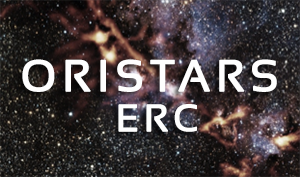Étudier la formation des étoiles en confrontant simulations numériques et observations.
Confronting star formation studies with space observations and computer simulations.
Completed project
Porteur CEA / PI : Ph. André
Résumé / Abstract
Understanding star formation from large to small scales is a major unsolved problem of modern astrophysics, fundamental in its own right and having a profound bearing on both galaxies and planet formation. Recent observational results with, e.g., Herschel suggest that interstellar filaments and prestellar cores represent two fundamental steps in the star formation process. In order to achieve a breakthrough in our observational and theoretical knowledge of star formation, we propose to perform and confront new numerical simulations with observations obtained with state-of-the-art instrumentation, including cutting-edge instruments developed by our group. We will investigate the following three key areas: (a) Origin of filamentary molecular clouds; (b) Core formation within filaments; (c) Fragmentation of prestellar cores into multiple systems and formation of protoplanetary disks. Our approach is novel in that 1) we combine observational, theoretical, and instrumental efforts and expertise within the same team, and 2) we address the problem of star formation coherently from large to small scales, allowing us to establish links between the "macrophysics" (e.g. global star formation in galaxies) and the "microphysics" of the problem (e.g. formation of individual solar systems). On the observational front, this project will be based on extensive (sub-)millimeter continuum and spectral line studies with the Herschel Space Observatory, IRAM 30m telescope and interferometer, APEX 12m telescope, and large ALMA interferometer. In particular, ORISTARS will greatly benefit from our "Gould Belt Survey" with Herschel providing the first complete census of prestellar cores and young protostars in nearby star-forming complexes, and from our new ArTéMiS bolometer camera for APEX. On the theoretical front, we will extensively use the adaptive mesh refinement magnetohydrodynamic code RAMSES developed in our Astrophysics Division and run new simulations with unprecedented resolution as well as additional physics. On the instrumental front, we propose to take advantage of technological innovations made at CEA in the context of the Herschel-PACS and ArTéMiS instruments to develop a large-format 1.2 mm bolometer array & polarimeter ("Polar-Channel") for the next-generation millimeter continuum camera for the IRAM 30m telescope. Polar-Channel will be a new powerful tool to map polarized 1.2mm dust continuum emission and help clarify the role of magnetic fields in forming prestellar cores and generating the rich filamentary cloud structure revealed by our ongoing Herschel observations.
Pour en savoir plus :
- November issue of "Adjacent Government" (p.134-135):
http://www.adjacentgovernment.co.uk/lg-publication-012-pages-index/ - article in "EU Research", p74
https://issuu.com/euresearcher/docs/eur10_digital_mag





